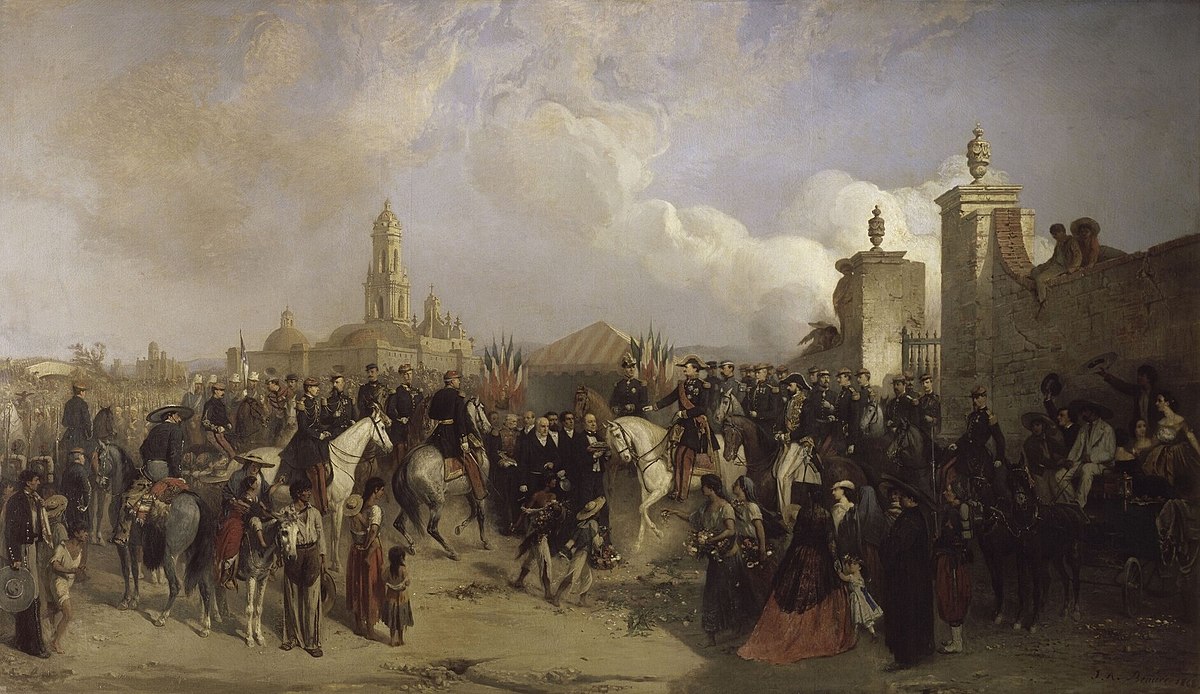
Second French intervention in Mexico
MexicoThe second French intervention in Mexico, was an invasion of the Second Federal Republic of Mexico, launched in late 1862 by the Second French Empire, at the invitation of Mexican conservatives. It helped replace the republic with a monarchy, known as the Second Mexican Empire, ruled by Emperor Maximilian I of Mexico, member of the House of Habsburg-Lorraine which ruled colonial Mexico at its inception in the 16th century.
Mexican monarchists came up with the initial plan to return Mexico to a monarchical form of government, as it had been pre-independence and at its inception as an independent country, as the First Mexican Empire. They invited Napoleon III to aid in their cause and help create the monarchy, which would, in his estimations, lead to a country more favorable to French interests, but which was not always the case.
After the administration of Mexican President Benito Juárez placed a moratorium on foreign debt payments in 1861, France, the United Kingdom, and Spain agreed to the Convention of London, a joint effort to ensure that debt repayments from Mexico would be forthcoming. On 8 December 1861, the three navies disembarked their troops at the port city of Veracruz, on the Gulf of Mexico. However, when the British discovered that France had an ulterior motive and unilaterally planned to seize Mexico, the United Kingdom separately negotiated an agreement with Mexico to settle the debt issues and withdrew from the country; Spain subsequently left as well. The resulting French invasion established the Second Mexican Empire (1864–1867). Many European states acknowledged the political legitimacy of the newly created monarchy, while the United States refused to recognize it.
The intervention came as a civil war, the Reform War, had just concluded, and the intervention allowed the Conservative opposition against the liberal social and economic reforms of President Juárez to take up their cause once again. The Mexican Catholic Church, Mexican conservatives, much of the upper-class and Mexican nobility, and some Native Mexican communities invited, welcomed and collaborated with the French empire's help to install Maximilian of Habsburg as Emperor of Mexico. The emperor himself, however proved to be of liberal inclination and continued some of the Juárez government's most notable liberal measures. Some liberal generals defected to the Empire, including the powerful, northern governor Santiago Vidaurri, who had fought on the side of Juárez during the Reform War.
The French and Mexican Imperial Army rapidly captured much of Mexican territory, including major cities, but guerrilla warfare remained rampant, and the intervention was increasingly using up troops and money at a time when the recent Prussian victory over Austria was inclining France to give greater military priority to European affairs. The liberals also never lost the official recognition of the Union part of the United States, and the reunited country began providing materiel support following the end of the American Civil War in 1865. Invoking the Monroe Doctrine, the U.S. government asserted that it would not tolerate a lasting French presence on the continent. Facing defeats and mounting pressure both at home and abroad, the French finally began to leave in 1866. The Empire would only last a few more months; forces loyal to Juárez captured Maximilian and executed him in June 1867, restoring the Republic.
